Ear Irrigation Procedure
Ear irrigation, or ear syringing, involves gently flushing the external auditory canal with warm water or saline to remove excess cerumen. It is a safe and effective procedure when performed correctly by trained professionals.
Ear irrigation, also known as ear syringing, is a common medical procedure used to remove excess cerumen (earwax) or debris from the external auditory canal. It involves gently flushing the ear canal with warm water or saline solution to ensure safe and effective removal. This procedure is typically performed by healthcare professionals who have received specialized training in ear care. Proper technique is essential to avoid complications, such as damage to the eardrum or ear canal. Ear irrigation is often recommended when cerumen buildup causes discomfort, hearing loss, or interferes with hearing aid use. The process is minimally invasive and usually well-tolerated when conducted correctly.
1.2 Purpose of the Procedure
The primary purpose of ear irrigation is to safely remove excess cerumen (earwax) or foreign debris from the external auditory canal. This procedure aims to alleviate symptoms such as hearing loss, itching, or discomfort caused by blockages. It also helps prepare the ear for further medical examination or treatment, such as hearing aid fitting. The process involves flushing the ear canal with warm water or saline solution to loosen and flush out the cerumen. When performed correctly by a trained professional, ear irrigation is an effective method for maintaining ear health and preventing complications associated with cerumen buildup.
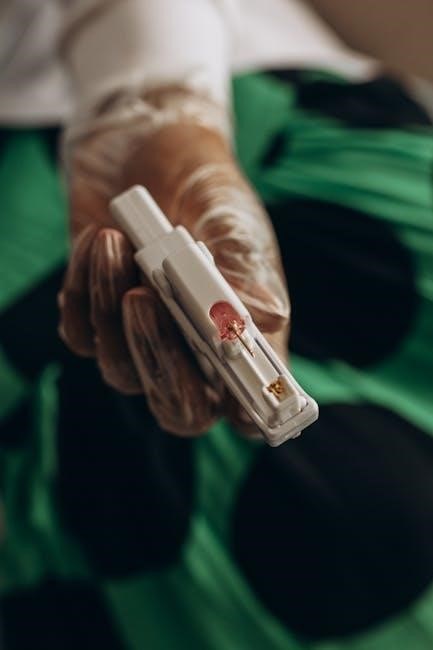
Indications and Contraindications
Ear irrigation is indicated for cerumen impaction causing symptoms. Contraindications include recent infections, perforated eardrums, or recent ear surgery. It’s a last resort after failed conservative methods.
2.1 When Ear Irrigation is Appropriate
Ear irrigation is appropriate for removing cerumen impaction that causes symptoms like hearing loss, itching, or discomfort. It is recommended when conservative methods, such as cerumenolytics, fail to resolve the issue. The procedure is suitable for patients with excessive earwax buildup, foreign body obstruction, or ear canal secretions. It is also used to prepare the ear for examinations or hearing aid fittings. Ear irrigation should be considered when the wax is soft and easily removable. Patients with recurrent ear infections or a history of ear trauma may benefit from this procedure under professional guidance. It is a safe option when performed by trained healthcare professionals using appropriate equipment and techniques.
2.2 Contraindications for Ear Irrigation
Ear irrigation is not recommended in cases of a perforated eardrum, recent ear surgery, or history of ear trauma. It should be avoided if the patient has an active ear infection, severe ear pain, or bleeding in the ear canal. Additionally, irrigation is contraindicated if the cerumen is hard or impacted, as this may cause further damage. Patients with a history of recurring ear infections or those with hearing loss should also avoid this procedure. It is not suitable for individuals with sensitive or fragile ear canals or those who have undergone recent middle ear surgery. Professional assessment is crucial to determine if ear irrigation is safe and appropriate.

Preparation for Ear Irrigation
Preparation involves gathering equipment like syringes, water, and otoscopes, using cerumenolytics to soften wax, positioning the patient, and ensuring a clean, safe environment for the procedure.
3.1 Equipment Needed
The essential equipment for ear irrigation includes a 60cc syringe or irrigation bulb, otoscope for examination, cerumenolytics to soften wax, gloves, and a clean towel. Additional items like butterfly infusion tubing, an ear cup, and a container for water are also required. The syringe should be filled with warm water or saline, ensuring no air bubbles are present. Proper equipment setup ensures safety and effectiveness, preventing complications during the procedure.
3.2 Use of Cerumenolytics
Cerumenolytics, such as olive oil or hydrogen peroxide, are used to soften earwax before irrigation, enhancing the procedure’s safety and effectiveness. Drops are typically administered 2-3 times daily for 3-5 days prior to irrigation. This step helps loosen cerumen, making it easier to remove and reducing the risk of canal trauma during irrigation. The choice of cerumenolytic may vary based on patient history and practitioner preference. Proper use of these agents is essential to avoid complications and ensure successful wax removal. Their application should be guided by clinical guidelines to maximize efficacy and minimize potential side effects.
3.3 Patient Positioning
Proper patient positioning is crucial for effective and safe ear irrigation. The patient should sit upright with their head slightly bent forward and tilted toward the irrigated ear. This position straightens the ear canal, facilitating the flow of irrigating solution. For adults, a seated position is standard, while children may be placed on a parent’s lap. The practitioner should support the patient’s head to maintain stability. Ensure the external auditory canal is accessible and aligned to prevent discomfort or complications. Proper positioning helps prevent water from pooling and reduces the risk of trauma or infection, ensuring the procedure is both comfortable and effective for the patient.
3.4 Setting Up the Environment
To ensure a safe and effective ear irrigation procedure, the environment must be appropriately prepared. The room should be clean, well-ventilated, and equipped with necessary materials, such as a syringe, water reservoir, and towels. Position the patient in a comfortable and stable location, ensuring easy access to the ear canal. The irrigation equipment should be within reach, and the water used should be at body temperature to avoid discomfort. A waste container should be available for disposable items. Proper lighting is essential to visualize the ear canal clearly. Maintain a calm and organized workspace to minimize distractions and ensure the procedure is performed efficiently and safely.
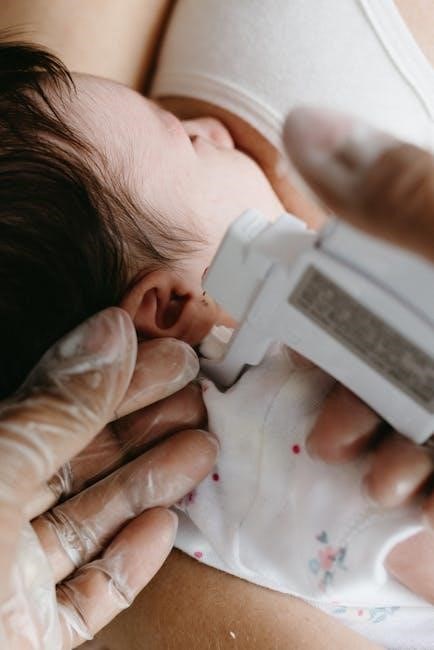
Step-by-Step Procedure
Examine the ear canal, prepare equipment, and position the patient. Gently irrigate the ear with warm water, monitoring for wax removal and patient comfort throughout the process.
4.1 Examining the Ear Canal
Before irrigation, the ear canal must be thoroughly examined using an otoscope to assess cerumen buildup, redness, or signs of infection. This step ensures the procedure is safe and necessary. The healthcare provider checks for any obstructions, discharge, or a perforated eardrum, which may contraindicate irrigation. The examination also helps identify the position and hardness of the wax, guiding the irrigation technique. If abnormalities are detected, the procedure may be postponed or alternative methods considered. This initial assessment is crucial for preventing complications and ensuring effective wax removal. Proper visualization of the ear canal structures is essential for a successful and safe irrigation process.
4.2 Irrigation Technique
During irrigation, warm water or saline solution is gently directed into the ear canal using a syringe or electronic irrigator. The tip is inserted approximately 1 inch into the canal, avoiding direct contact with the eardrum. The solution is released slowly to avoid pressure buildup, which could cause discomfort or trauma. The water flows around the ear canal, loosening and flushing out cerumen. The procedure is repeated if necessary, with care taken to avoid forcing wax deeper. Gentle technique is crucial to prevent damage to the canal or eardrum. The irrigation continues until the canal is clear, ensuring effective removal of debris while maintaining patient comfort and safety throughout the process.
4.3 Monitoring the Procedure
Continuous monitoring is essential during ear irrigation to ensure safety and effectiveness. The practitioner uses an otoscope to periodically inspect the ear canal, checking for wax removal progress and potential trauma. The solution’s return flow is observed for cerumen, debris, or blood, which may indicate complications. If the patient experiences pain, dizziness, or bleeding, the procedure is immediately halted. Monitoring also involves assessing the patient’s comfort and adjusting the technique as needed. This careful observation ensures the procedure remains safe and achieves its intended outcome without causing harm to the ear canal or eardrum. Regular checks help in promptly addressing any issues, ensuring a successful irrigation process.
4.4 Completing the Irrigation
Once the irrigation is deemed effective, the procedure is carefully concluded. The irrigation flow is stopped, and excess water is gently mopped from the outer ear. The practitioner checks for any remaining cerumen or debris and ensures the ear canal is clear. If the ear appears clean and no complications are observed, the process is complete. The patient is advised to avoid inserting objects into the ear and to keep the ear dry for 24 hours. Any post-procedure discomfort or complications, such as dizziness or bleeding, are addressed immediately. The outcomes are documented, and follow-up care instructions are provided to the patient.
4.5 Post-Procedure Care
After completing the irrigation, the patient is advised to keep the ear dry for 24 hours to prevent infection. They should avoid inserting objects like cotton swabs into the ear. If mild discomfort occurs, over-the-counter pain relievers may be recommended. Patients are also instructed to avoid submerging the ear in water during bathing or swimming. Follow-up appointments may be scheduled to monitor healing and ensure no complications arise. Clear instructions are provided to help the patient manage any residual symptoms, such as itching or mild discomfort. Proper post-procedure care ensures the ear heals effectively and reduces the risk of infections or further complications.

Post-Procedure Considerations
Post-procedure care involves assessing outcomes, managing complications, and educating patients on proper ear hygiene to prevent future issues and ensure optimal recovery and safety.
5.1 Assessing Outcomes
After the irrigation procedure, it is crucial to assess the outcomes to ensure the ear canal is clear of debris and cerumen. Use an otoscope to inspect the external auditory canal and tympanic membrane for any remaining wax or damage. Check for signs of complications, such as pain, bleeding, or irritation. If the procedure was successful, the ear canal should appear clean, and hearing may improve. If cerumen remains, further irrigation or alternative methods may be necessary. Document the findings and patient’s response. If complications arise, discontinue the procedure and notify the healthcare provider immediately for further evaluation and management.
5.2 Managing Complications
Complications during or after ear irrigation must be managed promptly to prevent further harm. If pain, bleeding, or trauma occurs, discontinue the procedure immediately and notify the healthcare provider. Assess the ear canal for any damage to the tympanic membrane or surrounding tissue. If infection is suspected, antimicrobial treatment may be necessary. In cases of dizziness or vertigo, ensure the patient is stable and comfortable. Document all complications and outcomes. Provide clear post-procedure instructions to the patient, including monitoring for signs of infection or persistent discomfort. Referral to an ENT specialist may be required for unresolved issues or severe complications.
5.3 Patient Education
Effective patient education is essential to prevent future complications and promote ear health. Patients should be advised to avoid inserting objects like cotton swabs into the ear, as this can push wax deeper and cause impaction. Regular use of ear drops, such as olive oil, can help soften cerumen and reduce the need for irrigation. Patients should be educated on signs of complications, such as pain, discharge, or dizziness, and instructed to seek medical attention if these occur. Emphasize the importance of following post-procedure care instructions to avoid infections. Additionally, patients should be informed about when to return for follow-up appointments to ensure proper healing and address any concerns.
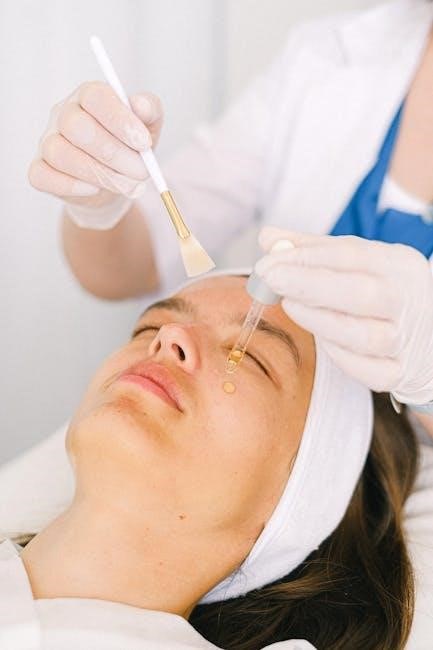
Safety Guidelines and Precautions
Always use sterile equipment and ensure the irrigation solution is at body temperature to avoid discomfort or dizziness. Trained professionals should perform the procedure gently to prevent ear trauma.
6.1 General Safety Measures
Ensure the irrigation solution is at body temperature to prevent dizziness or discomfort. Use sterile or clean equipment to minimize infection risks. Only trained professionals should perform the procedure to avoid ear trauma. Monitor the patient for pain or bleeding, and discontinue if any adverse reactions occur. Maintain gentle pressure during irrigation to prevent eardrum damage. Position the patient appropriately to facilitate easy drainage. Use a maximum of two reservoirs of water per procedure to avoid excessive pressure. Regularly inspect the ear canal with an otoscope to assess progress and safety. Immediately stop if complications arise and consult a healthcare provider. Always follow established guidelines to ensure a safe and effective procedure.
6.2 Equipment Safety
Use sterile or clean equipment to prevent infections. Disposable syringes, such as 60cc single-use syringes or irrigation bulb syringes, are recommended. Avoid using manual syringes without pressure control. Ensure tubing is cut to the correct length to maintain gentle flow. Check equipment for damage or blockages before use. Store devices in a clean, dry environment to prevent contamination. Regularly inspect and maintain irrigation devices according to manufacturer guidelines. Use distilled or sterile water to fill syringes, ensuring no air bubbles are present. Properly dispose of used equipment to maintain hygiene standards. Always follow manufacturer instructions for equipment usage and safety. This ensures the procedure is performed safely and effectively, minimizing risks to the patient.
6.3 Infection Control
Infection control is critical during ear irrigation to prevent the spread of pathogens. Always use sterile or clean equipment, such as disposable syringes and irrigation tips, to minimize contamination risks. Ensure proper hand hygiene before and after the procedure. Clean the external ear with an antiseptic solution prior to irrigation. Use sterile or distilled water for the procedure to avoid introducing bacteria. Dispose of all used materials, including water and debris, in a biohazard waste container. Regularly clean and disinfect the environment and equipment used during the procedure. Follow institutional infection control guidelines to maintain patient safety and reduce the risk of complications.
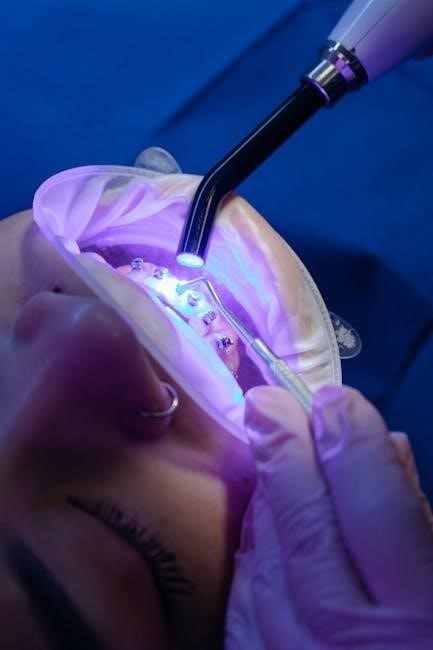
Resources and References
Key resources include the BSA Practice Guidance, NHS guidelines, and Healthline articles. These documents provide detailed protocols and evidence-based recommendations for safe ear irrigation practices and patient care.
7.1 Relevant Guidelines
Relevant guidelines for ear irrigation include the British Society of Audiology (BSA) Practice Guidance and NHS protocols. These documents outline safe practices, equipment recommendations, and patient assessment criteria. They emphasize the use of trained professionals, proper equipment like electronic irrigators, and contraindications such as recent ear infections. Guidelines also stress the importance of patient education and consent, as well as post-procedure care to prevent complications. These resources provide evidence-based recommendations to ensure the procedure is performed safely and effectively, minimizing risks and improving outcomes for patients with cerumen impaction.
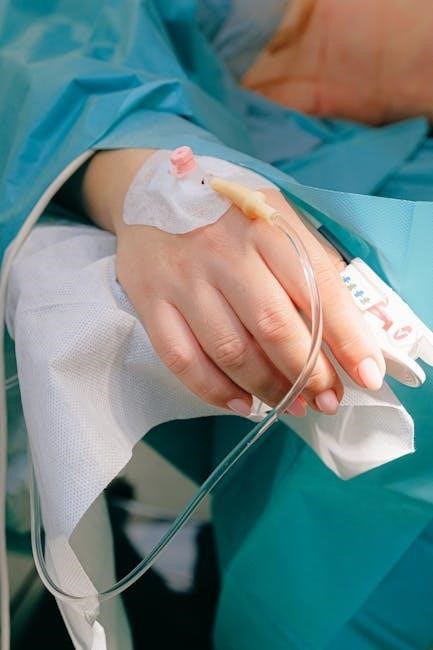
7;2 Additional Reading Material
For further understanding, refer to academic journals like the Journal of Audiology and Otolaryngology, which publish studies on ear irrigation techniques. The NHS Ear Care Guidelines and BSA Practice Guidance offer comprehensive insights. Additionally, resources from audiology associations provide detailed case studies and clinical trials. Websites like Healthline and MedlinePlus offer patient-friendly explanations. Educational materials from professional organizations, such as training manuals for healthcare providers, are also valuable. These resources collectively enhance understanding of ear irrigation, ensuring safe and effective practices for both professionals and patients.